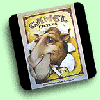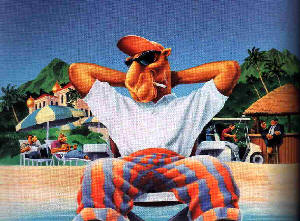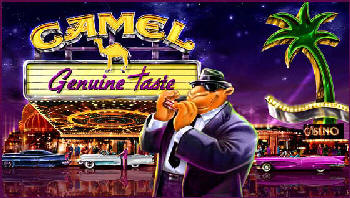Camel Cigarettes
 Click here to shop for duty free Camels.
Click here to shop for duty free Camels.
I
n 1910, the most popular brands were Pall Mall, Sweet Caporals,
Piedmont, Helmar and Fatima. By 1917 there are now 3 national brands
of cigarettes on the US market: Lucky Strike, Camel cigarettes and
Chesterfield.
In 1921, RJ Reynolds spends a whooping $8 million in advertising,
mainly on Camel cigarettes. They also launch the highly successful
"I'd Walk a Mile for a Camel" ad slogan. By 1923, Camel cigarettes
control 45% of the U.S. cigarette market! The following year,
Phillip Morris begins to push Marlboro cigarettes as a woman's
cigarette that is a "Mild as May"!

By 1930, the most popular brands were Lucky Strike, Camel
cigarettes, Chesterfield, Old Gold and Raleigh.
By 1940, Camel cigarettes take the lead as the most popular brands
were Camel cigarettes, Lucky Strike, Chesterfield, Raleigh and Old
Gold.
In 1950, the most popular brands are Camel cigarettes, Lucky Strike,
Chesterfield, Commander and Old Gold, so not much change.

By 1970, Camel cigarettes dropped off the top five
as the most popular brands were Winston, Pall Mall, Marlboro, Salem and Kool.
 In
1987, R J Reynolds introduces Joe Camel. A North Carolina advertising agency
uses Joe Camel to celebrate "Old Joe's" 75th anniversary. Four years later, the
Journal of the American Medical Association publishes two reports on Joe Camel
and kids. One study found that 91% of 6 year olds recognized Joe Camel, similar
to the percent who recognized Mickey Mouse. The other study finds that since the
inception of the Joe Camel campaign in 1987, Camel cigarettes share of the under
18 market has risen from 0.5% to 32.8%, worth more than $400 million per year in
sales! The young character was portrayed as suave and sophisticated in different
social settings, such as bars and pool halls. The campaign had helped to raise
Camel cigarettes market share to 4.7% in 1996, from 4.4% in 1988, according to
tobacco industry analysts.
In
1987, R J Reynolds introduces Joe Camel. A North Carolina advertising agency
uses Joe Camel to celebrate "Old Joe's" 75th anniversary. Four years later, the
Journal of the American Medical Association publishes two reports on Joe Camel
and kids. One study found that 91% of 6 year olds recognized Joe Camel, similar
to the percent who recognized Mickey Mouse. The other study finds that since the
inception of the Joe Camel campaign in 1987, Camel cigarettes share of the under
18 market has risen from 0.5% to 32.8%, worth more than $400 million per year in
sales! The young character was portrayed as suave and sophisticated in different
social settings, such as bars and pool halls. The campaign had helped to raise
Camel cigarettes market share to 4.7% in 1996, from 4.4% in 1988, according to
tobacco industry analysts.
As part of the industry's settlement with state attorneys general, tobacco
companies agreed to eliminate human and cartoon figures in advertising — a move
that doomed both Camel cigarette's Joe Camel and Marlboro cigarette's Marlboro
Man.
![]()
